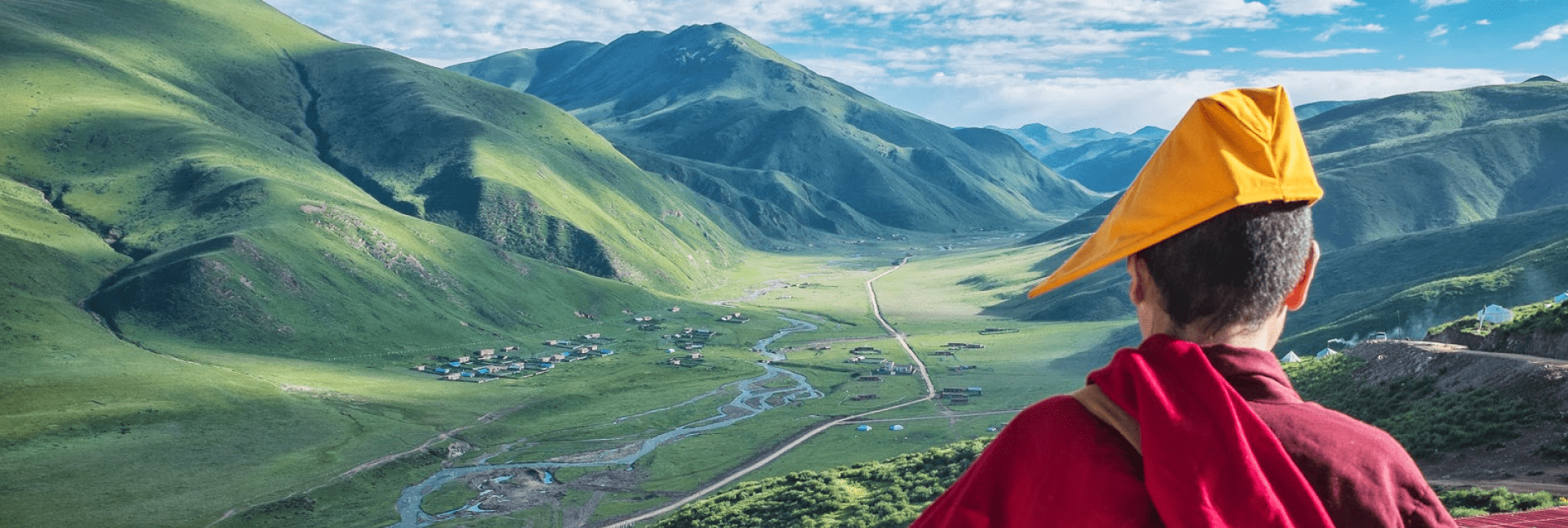
Religion
The Chinese government sees Tibetan Buddhism as a threat and is trying to weaken Tibetans’ connection to it in order to weaken their Tibetan identity and strengthen Chinese control over Tibet.

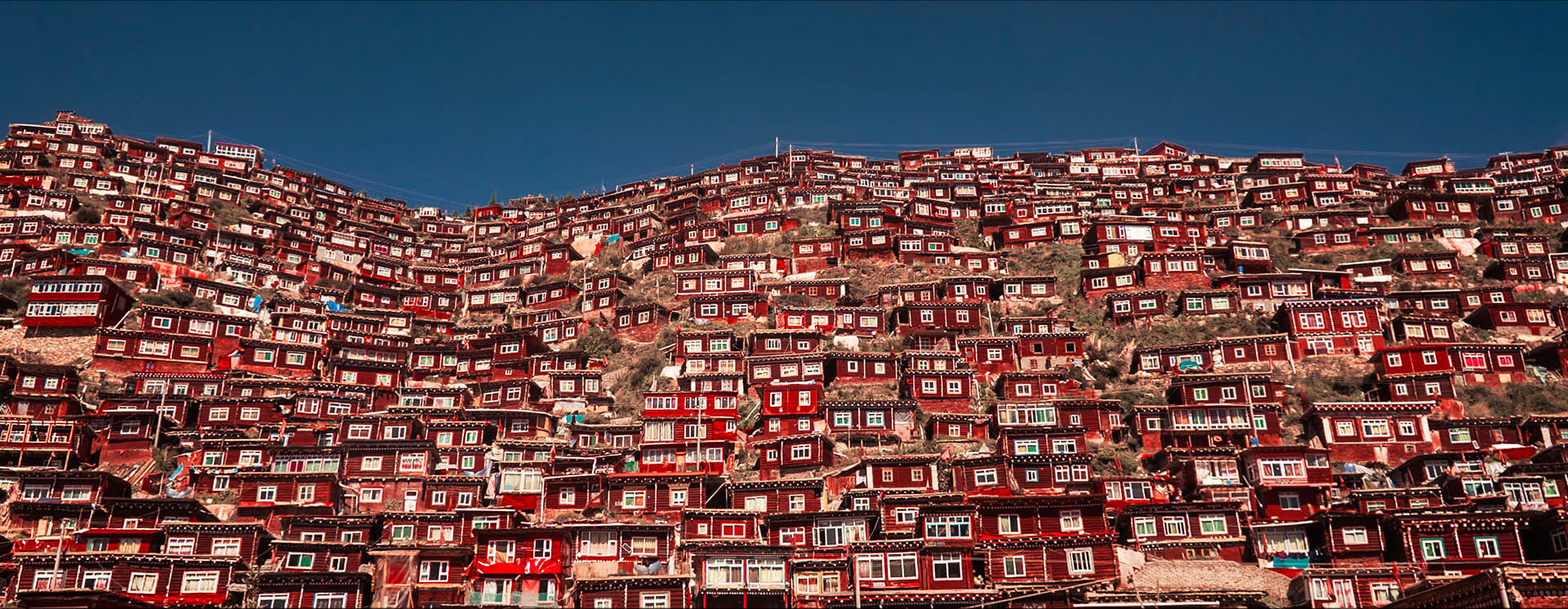
Spread among the hills in Serta County in Kardze, eastern Tibet, Larung Gar Buddhist Institute is the largest and one of the most significant sites in Tibetan Buddhism. It was established in 1980 and has grown over the years to become home to anywhere between 10,000 and 40,000 residents. These residents include monks, nuns and visiting students, who come from Tibet, China and other countries to learn.
In June 2016, the government of Serta County issued an order stating that the number of residents at Larung Gar had to be reduced to 5,000 people by October 2017. The order came from the very top – the Chinese central government in Beijing.
The order also decreed that vacated residences were to be demolished, along with other buildings such as nuns’ hostels and old people’s homes.
It also effectively put Larung Gar’s internal affairs under the control of the Chinese Communist Party (CCP). It handed majority control of Larung Gar’s management to the CCP and stipulated that Larung Gar’s financial management should be handed over to Chinese authorities.
Official sources stated that the order was issued for the residents’ safety, to ease overcrowding and to reduce the risk of fire. But the residents of Larung Gar were never consulted and their wishes to remain at the monastery and practice their faith in peace were ignored.
Those removed from Larung Gar were returned to their native regions of Tibet, often miles away from their colleagues and friends at Larung Gar.
The demolitions began in July 2016 and lasted the rest of the year. One resident likened the demolitions to “destroying heaven”.
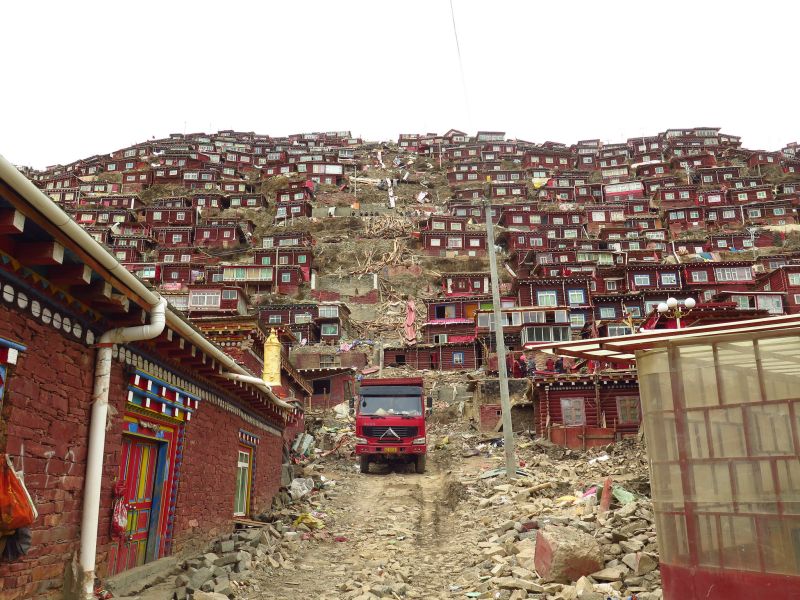
Demolition of homes in Larung Gar in 2016. (Photo: Charles Tay)
The demolitions began a month later, in July 2016. They were carried out by Chinese work teams consisting of workers, local government officials, police and security services, accompanied by digging teams. The demolitions and removals took place throughout the rest of the year until December, when there was a pause due to the winter conditions. According to the latest figures, 4,828 people have been evicted and at least 4,725 buildings destroyed.
The demolitions have had a devastating effect on people across Tibet, as well as the residents themselves. One resident likened the demolitions to “destroying heaven”. Three nuns are reported to have taken their own lives in protest against this destruction. One of them, Rinzin Dolma, committed suicide on 20 July 2016 and left a note saying she could not “bear the pain of the endless Chinese harassment of innocent Buddhists who quietly studied at the institute”.
Those removed from Larung Gar were returned to their native regions of Tibet, often miles away from their colleagues and friends at Larung Gar. Due to the travel restrictions imposed in the Tibetan Autonomous Region, it is highly unlikely that residents will be able to meet again. This was reflected in video footage of the removals that was smuggled out of Larung Gar and which shows residents crying as those being removed are put on coaches and driven out of the site. Residents who have been removed from the site have been made to sign pledges promising not to return to live there.
Monks and nuns who have been returned to their native regions from Larung Gar have been prevented from joining new monasteries and nunneries. Some have been subjected to humiliating patriotic re-education sessions, in which they are required to sing Chinese propaganda songs and denounce their own Tibetan culture and religion.
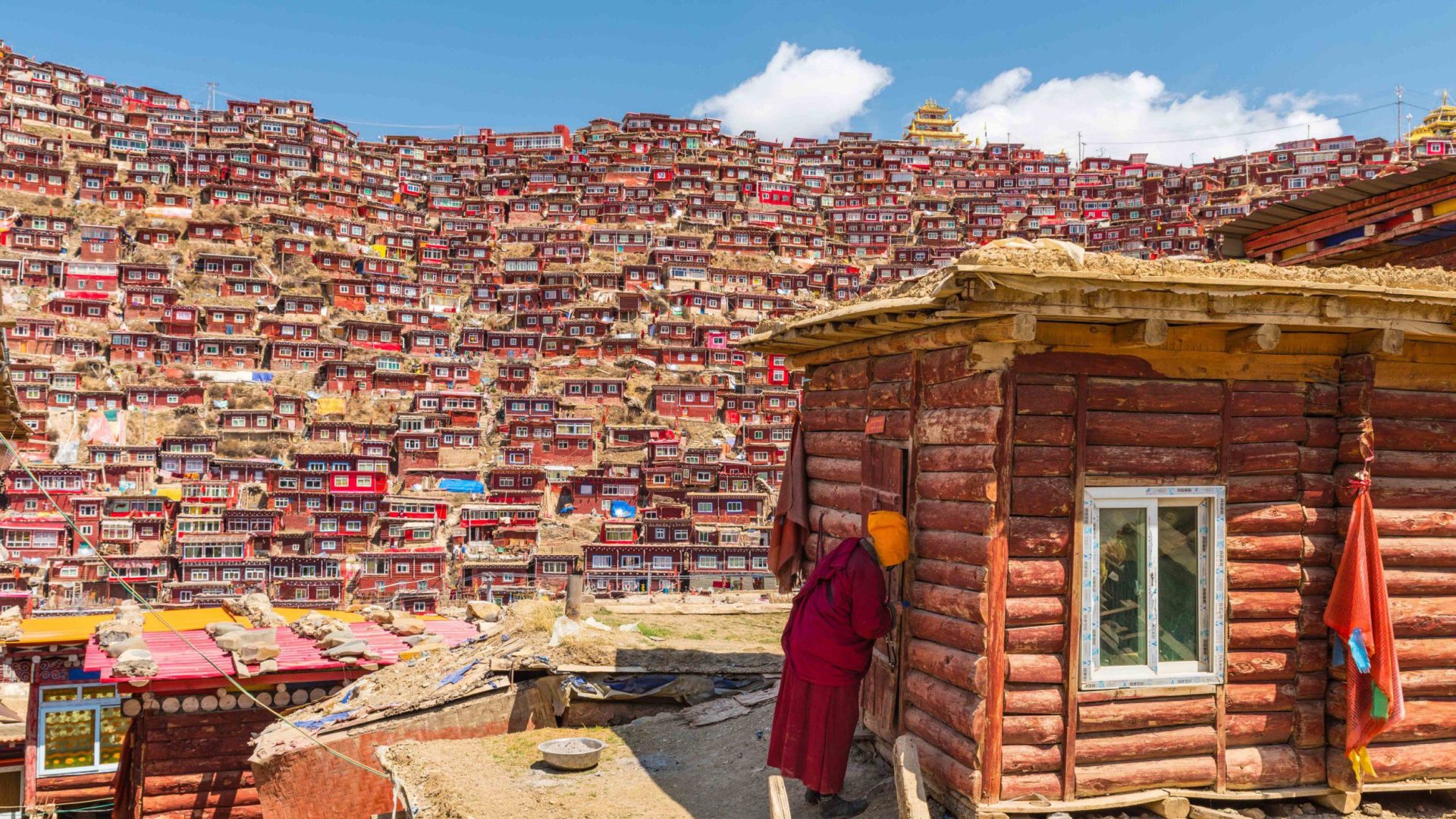
MPs, representatives and government bodies around the world have condemned the evictions and demolitions at Larung Gar:
The co-chairs of the United States’ Human Rights Commission wrote to the Chinese Ambassador to the United States in October 2016, expressing their “deep concern” over the removals and demolitions and urging China to “stop the demolitions and evictions, rebuild and restore the affected infrastructure, and permit all those people under Chinese jurisdiction who wish to pursue their Buddhist faith to do so without government interference or ‘guidance.”
The European Parliament, the legislative body of the European Union, passed a strong resolution in December 2016, demanding that China halt the demolitions and forced removals at Larung Gar, and respect Tibetans’ religious freedoms.
There has, as yet, been little condemnation from senior government ministers and leaders. Pressure from these sources would draw international attention to the evictions and demolitions and put pressure on the Chinese government to halt the destruction. Such pressure would also honour past statements from international governments, including the UK, that they are concerned with the protection of the right to religious freedom in Tibet.
In late 2016, we put together the following short film (ten minutes) to explain the situation at Larung Gar. Please watch and share it if you can.
China wouldn’t allow any external groups into the country to monitor what was happening at Larung Gar. So, in 2017, we commissioned satellites to fly over the site and take high definition photos of what was happening there. Thanks to these images, we have clear proof which shows large areas, once containing dwellings, that have now been completely cleared.
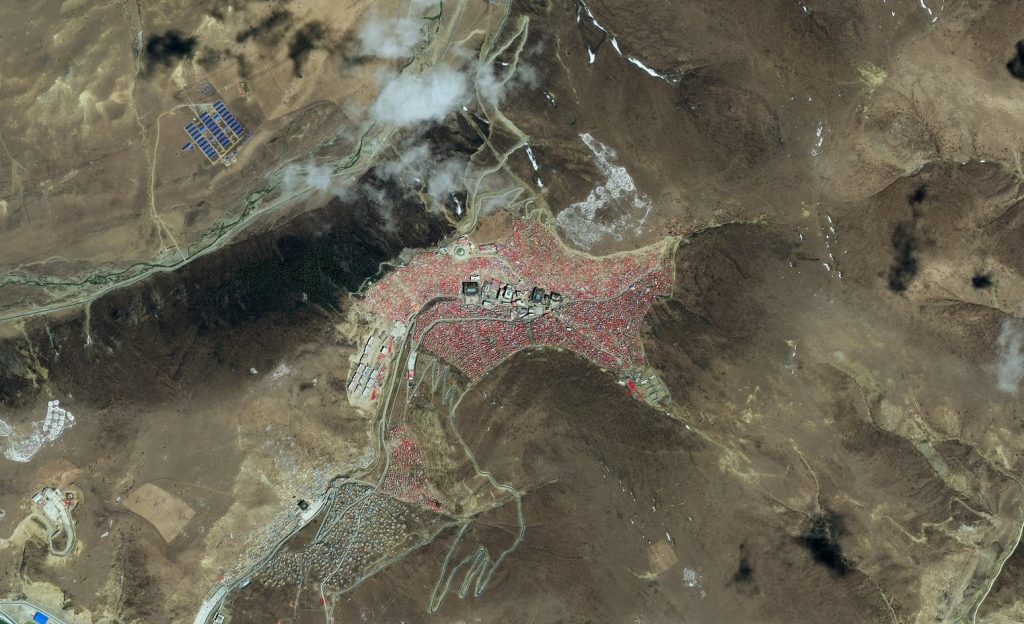
Satellite image of Larung Gar
We also received images and testimony from a reporter who was able to sneak on-site to take photos and speak with residents. He was able to gather evidence that China was planning to build infrastructure for vast numbers of visitors – it looks like Larung Gar may be made into a tourist site.
For further information on China’s campaign of destruction at Larung Gar, see our “Destroying Heaven” report from October 2017 (pdf).
The evictions and demolitions at Larung Gar are part of a wider attack on freedom of religion in Tibet. Despite the Chinese Communist Party (CCP) being officially atheist, the government attempts to exert control over Tibetan Buddhism, a religion that unifies many Tibetans. The CCP sees its control over Tibetan Buddhism as a means of ending the resistance to its military occupation of Tibet. In April 2016, Chinese president Xi Jinping stated: “Religious groups… must adhere to the leadership of the Communist Party of China.”
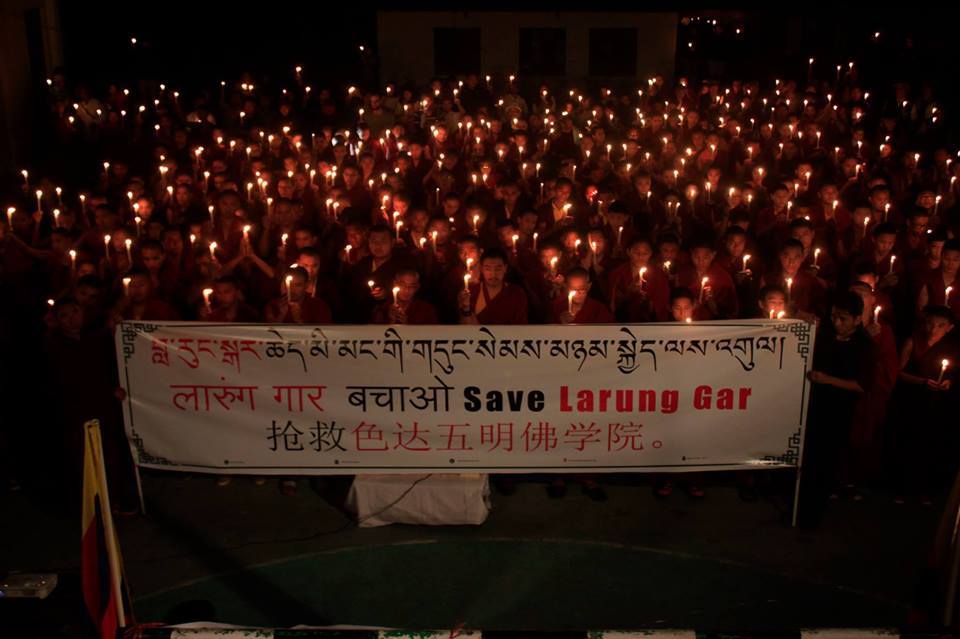
Save Larung Gar protest
The latest US State Department’s report on international religious freedom (2019) states that the Chinese government has “continued to pursue a strategy of forced assimilation and suppression of Tibetan Buddhism throughout Tibet”. It reports that authorities have “controlled monastic education, decided if religious venues could be built or repaired, and restricted religious gatherings”.
Tibetan monasteries and nunneries have increasingly been put under the control of the CCP. They are required to fly Chinese flags and many are run from inside by committees loyal to Beijing. CCTV cameras are often installed. The numbers of residents at each monastery are tightly regulated. Chinese regulations also forbid Tibetans from establishing new monasteries. Tibetans are intimidated by security forces at prayer festivals and denied the opportunity to travel for religious teachings.
Since the events of Larung Gar in 2017, the religious freedom of the residents has continued to be restricted as they have been prohibited from celebrating the Dechen Shingdrup festival, a major Buddhist festival, every year since 2016.
Nevertheless, the evicted monks and nuns have continued to resist the Chinese authorities and a gathering at Larung Gar was reported in January 2019. The gathering was to commemorate the 15th anniversary of the death of the Buddhist institution’s founder – Khenpo Jigme Phuntsok.
Larung Gar is not the only Tibetan Buddhist community to be affected by demolitions and evictions. In recent years, Yarchen Gar, also in eastern Tibet, has seen thousands of its residents forcibly removed and large areas of the site have been levelled.

The Chinese government sees Tibetan Buddhism as a threat and is trying to weaken Tibetans’ connection to it in order to weaken their Tibetan identity and strengthen Chinese control over Tibet.

Nomads are being forced out of their ancestral lands, which they have farmed for centuries, and relocated to urban settlements. Their entire way of life is uprooted, and they receive little support from the Chinese government.
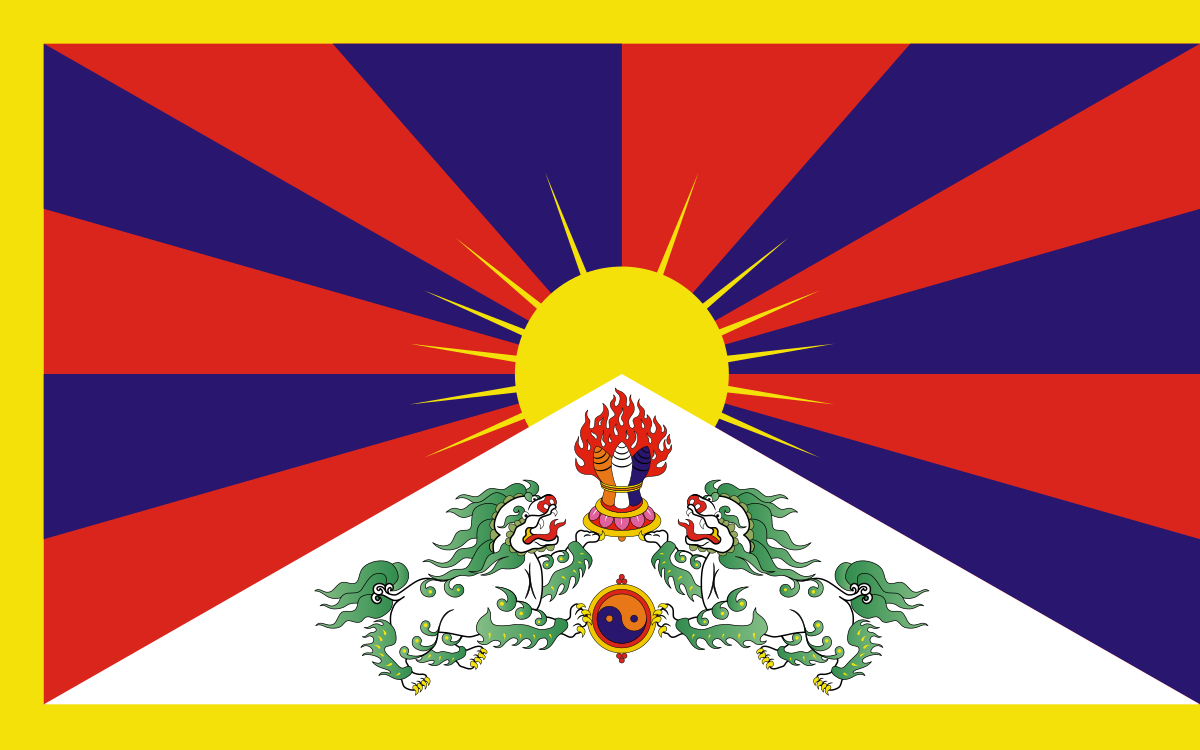
China has made possessing the Tibetan flag illegal. It is censored from media inside China. Meanwhile, Tibetans face arrest for owning, waving or flying their flag, or even having an image of it on their phone.
